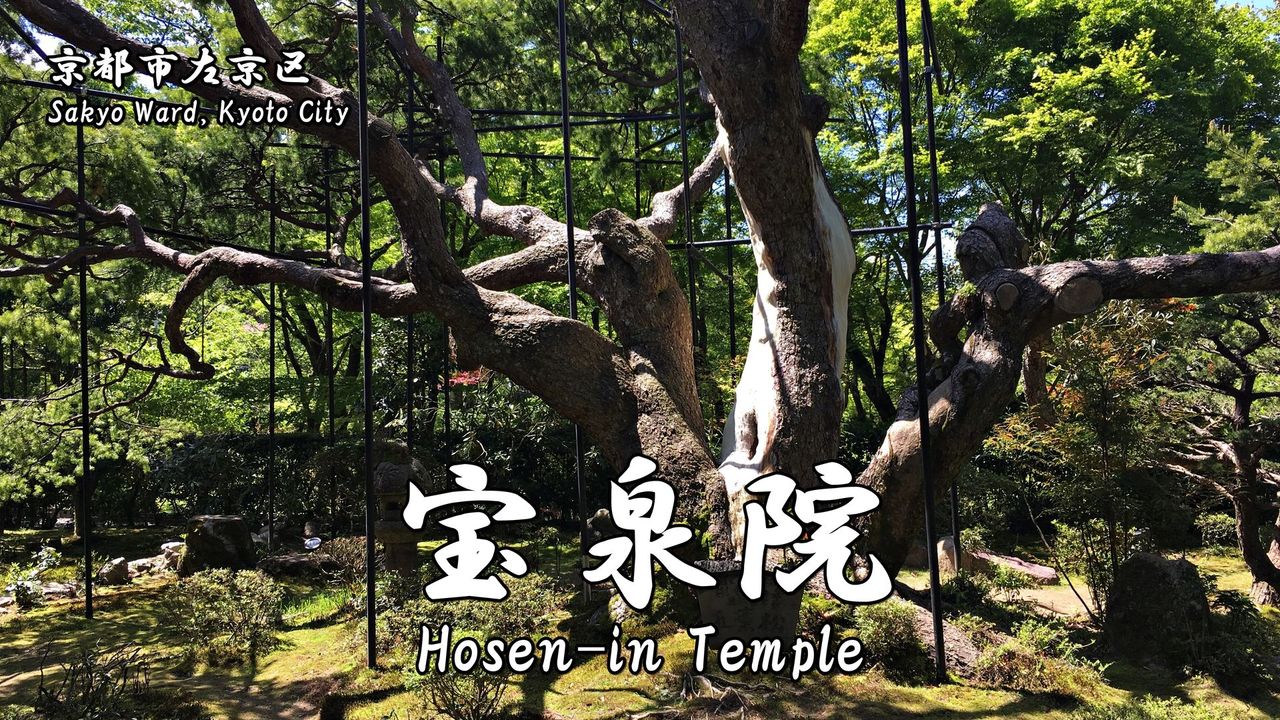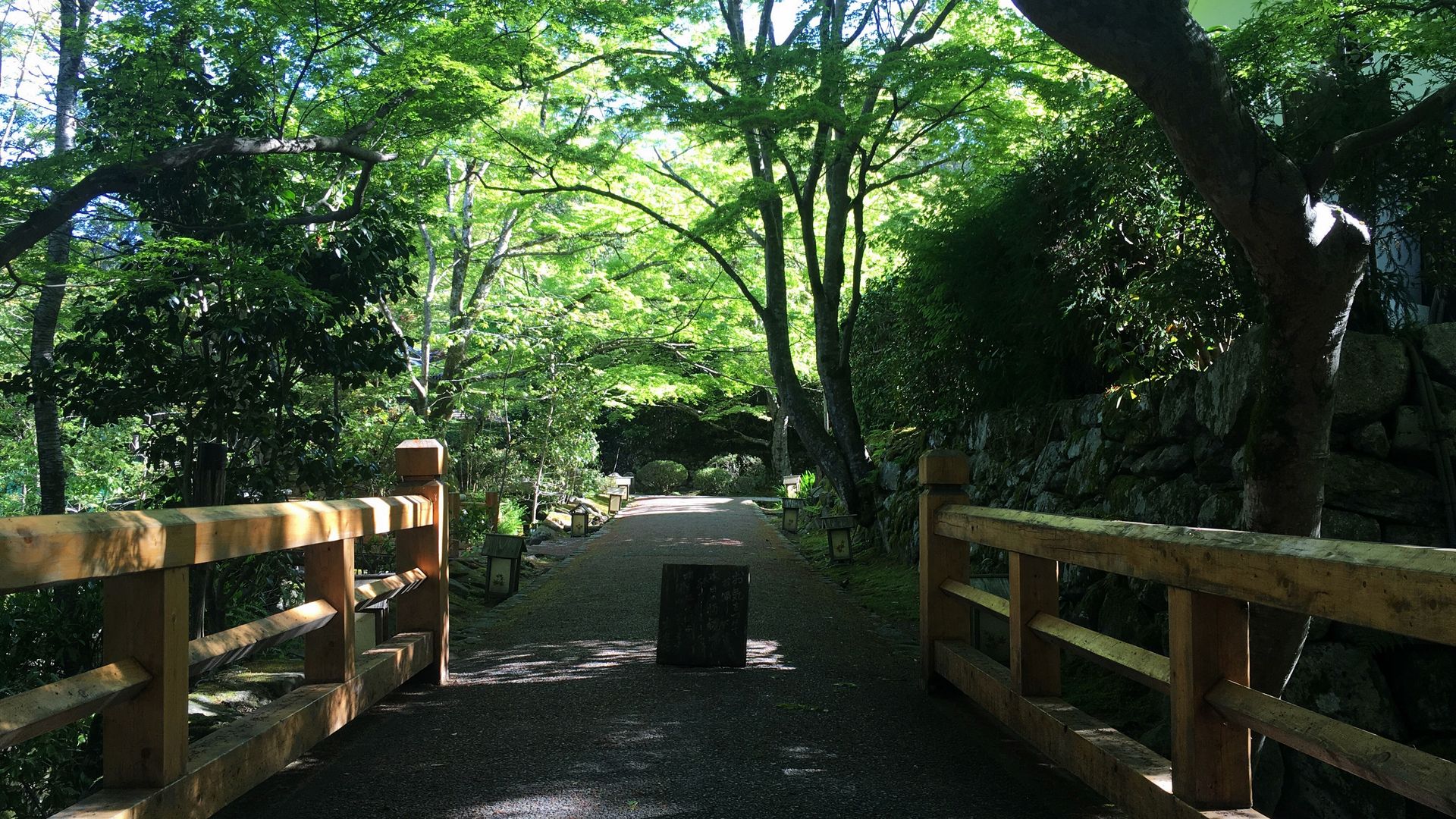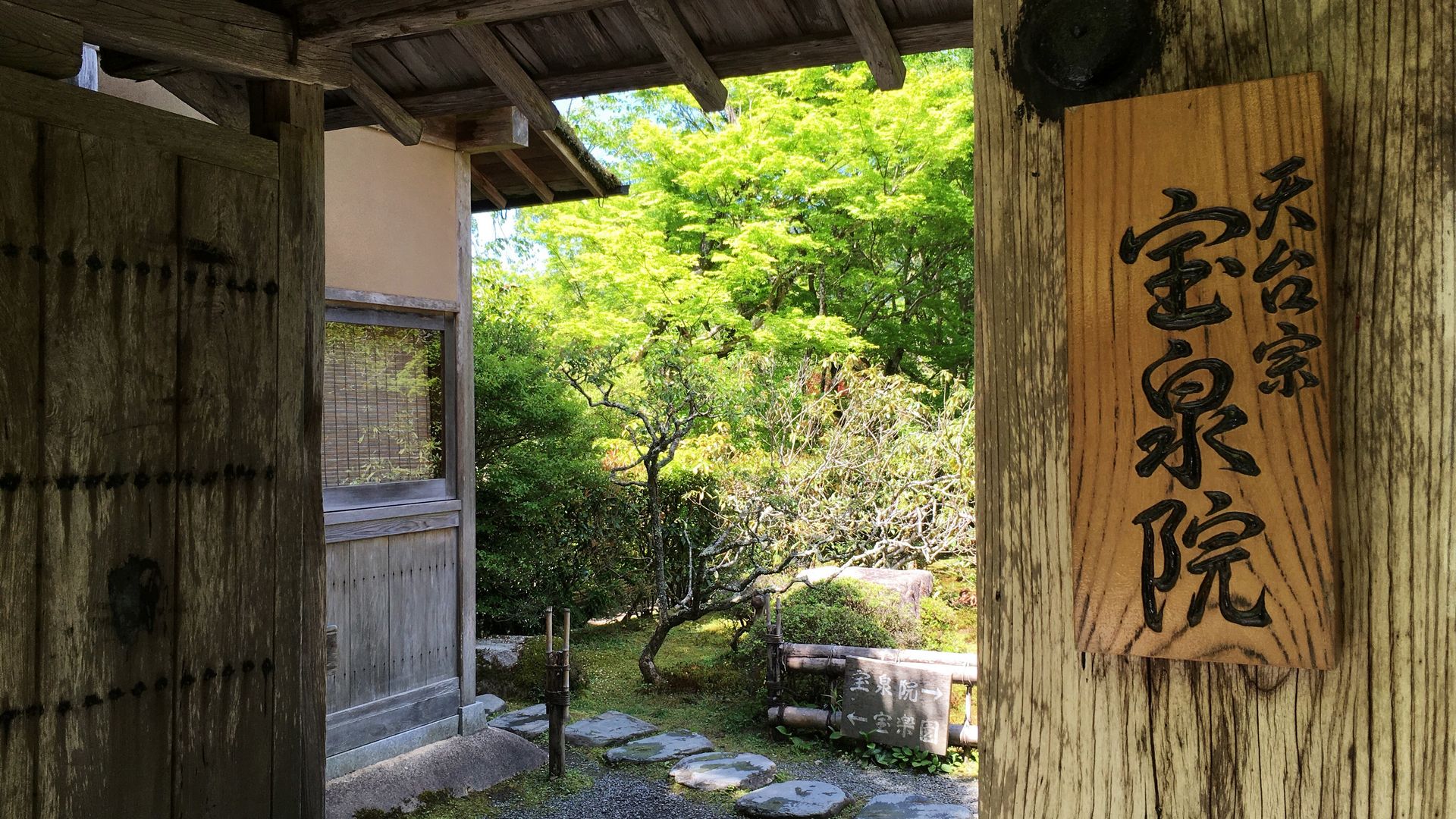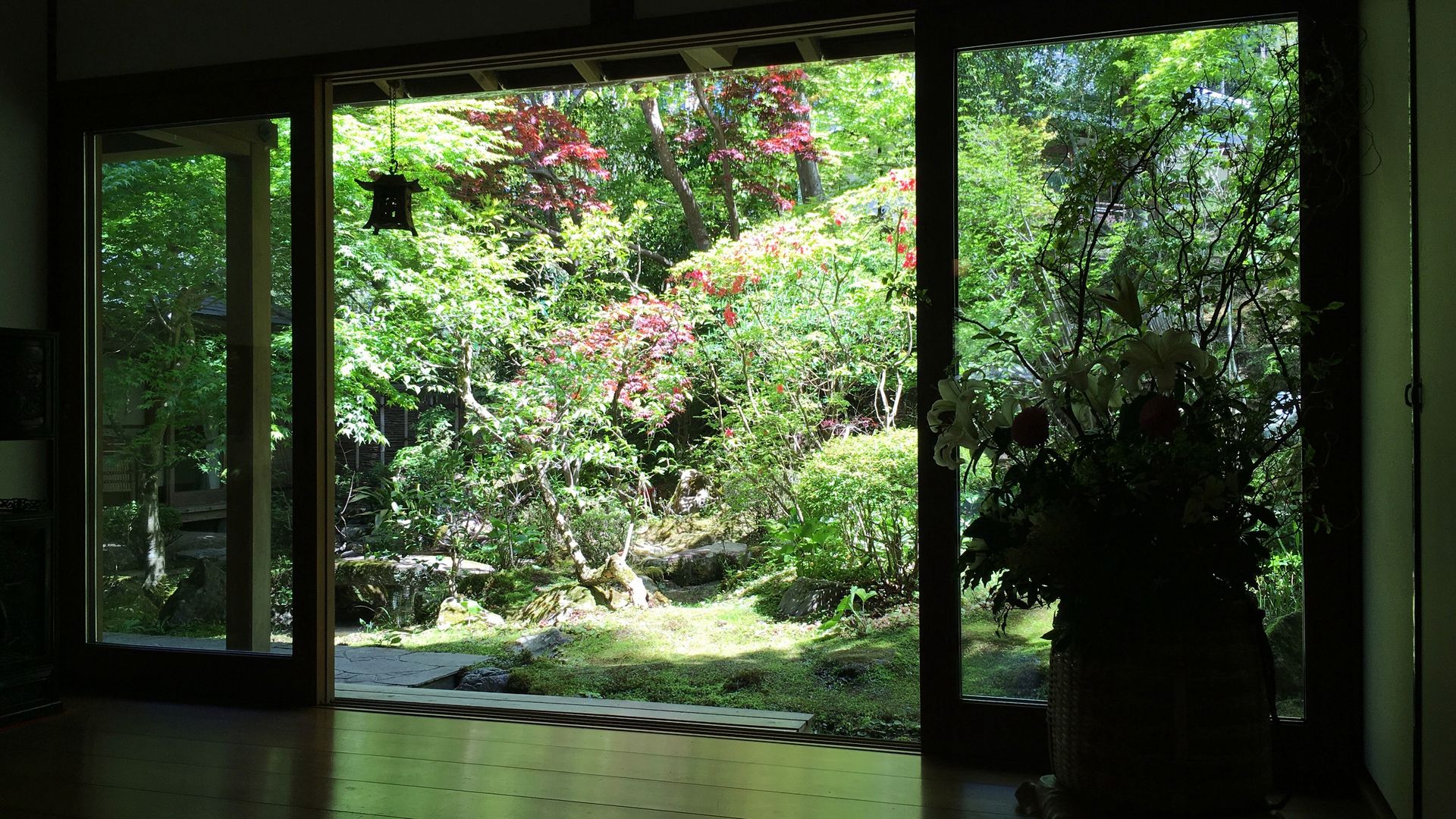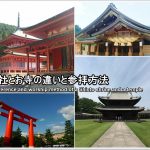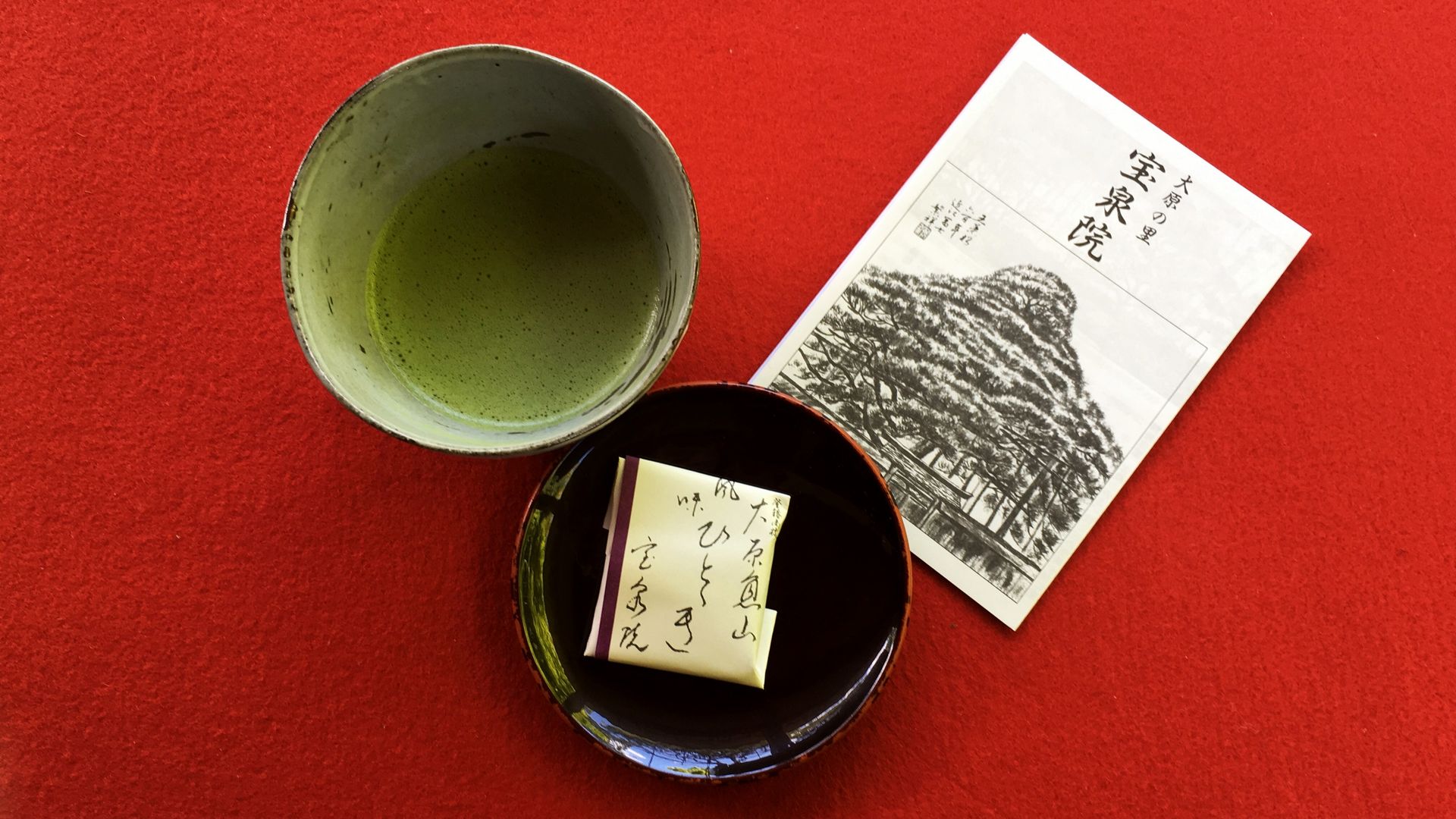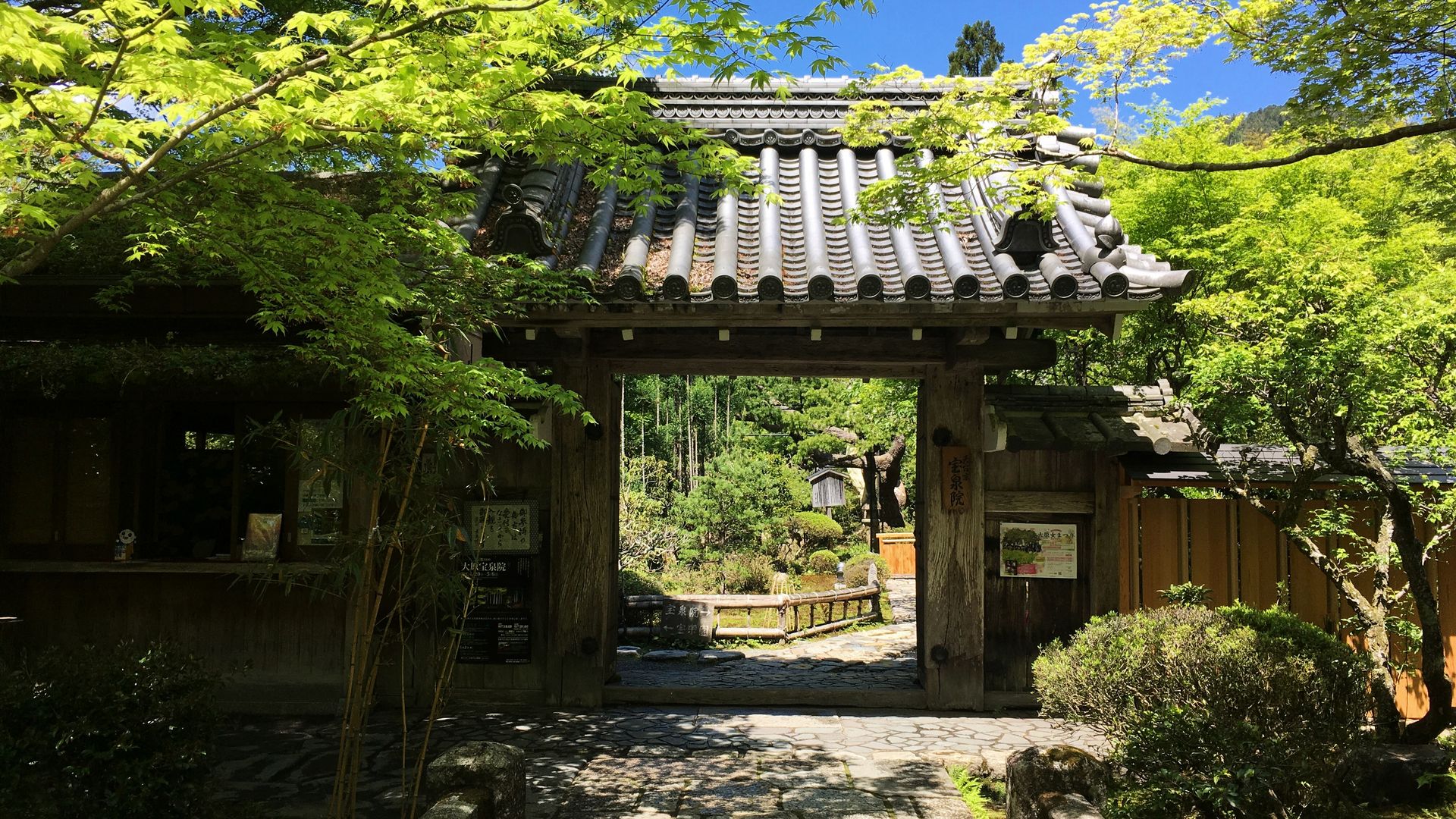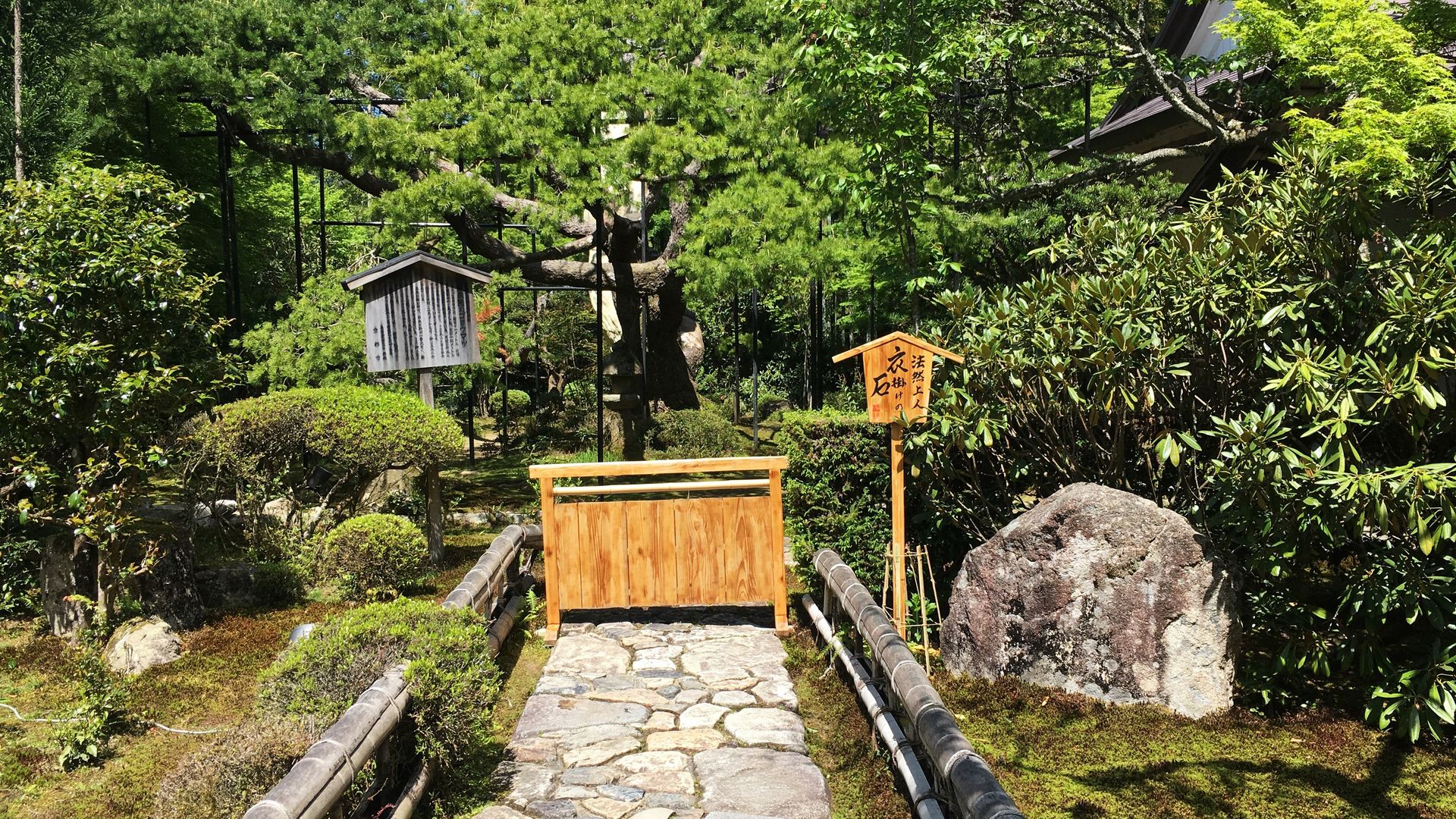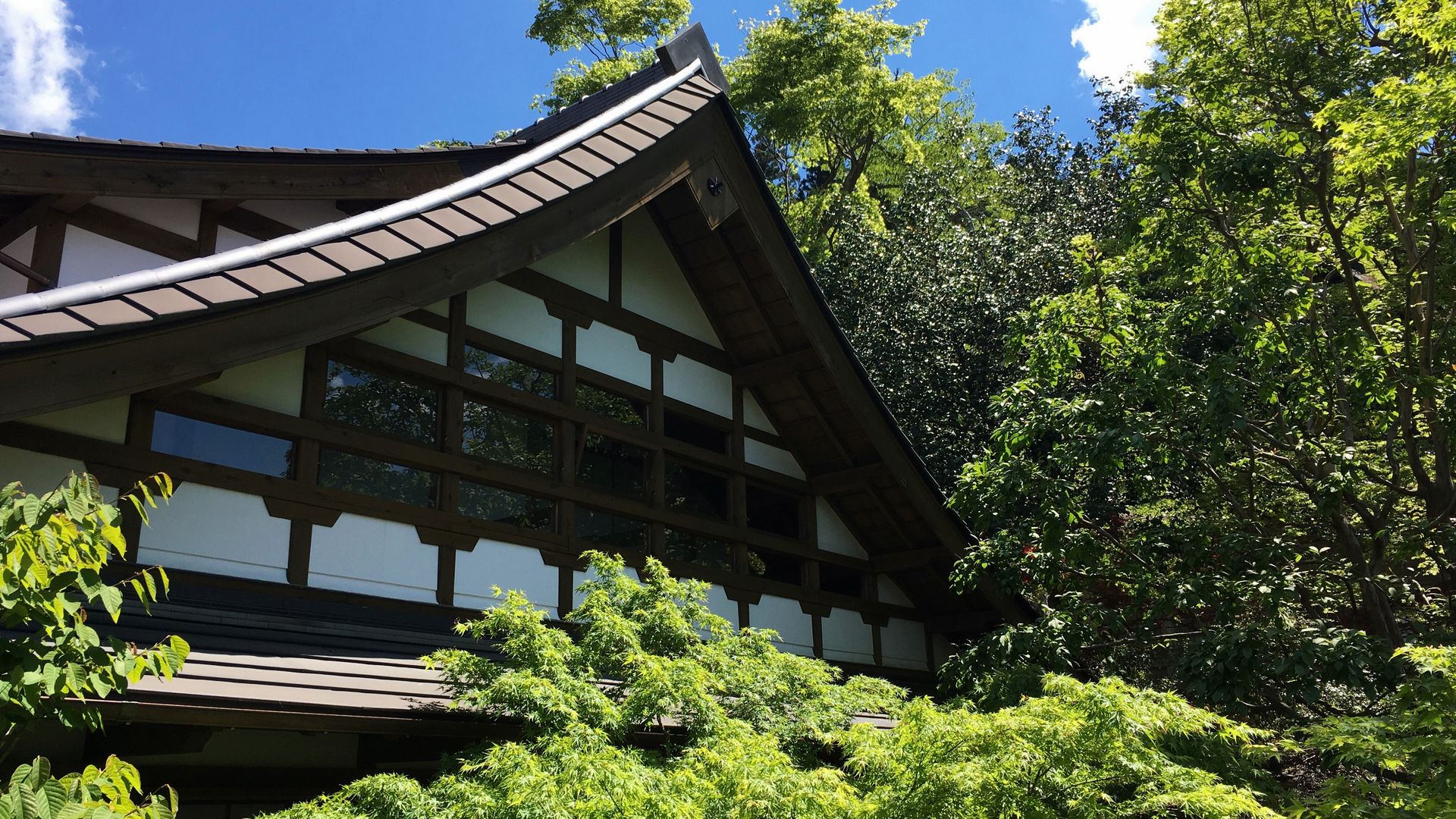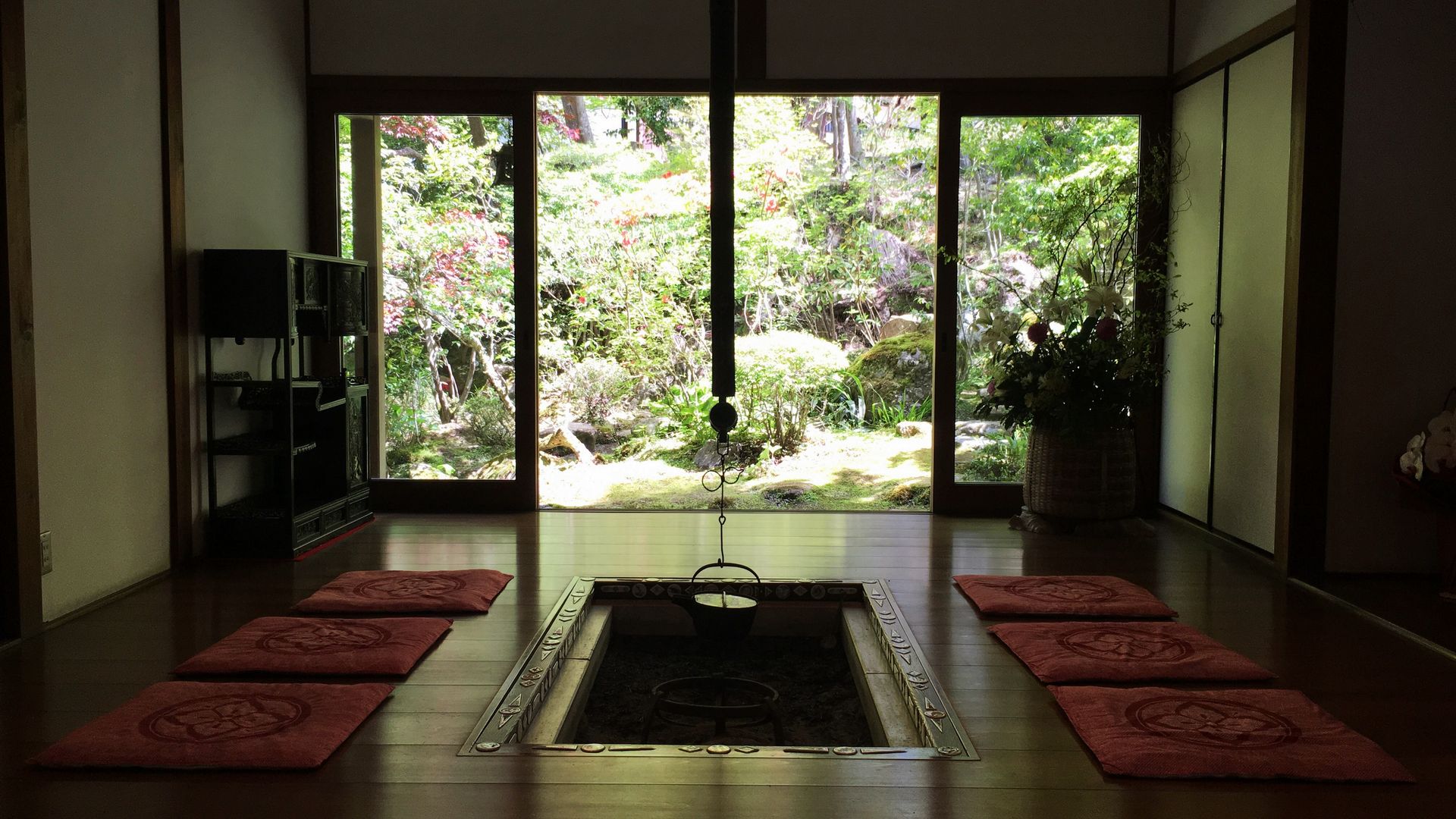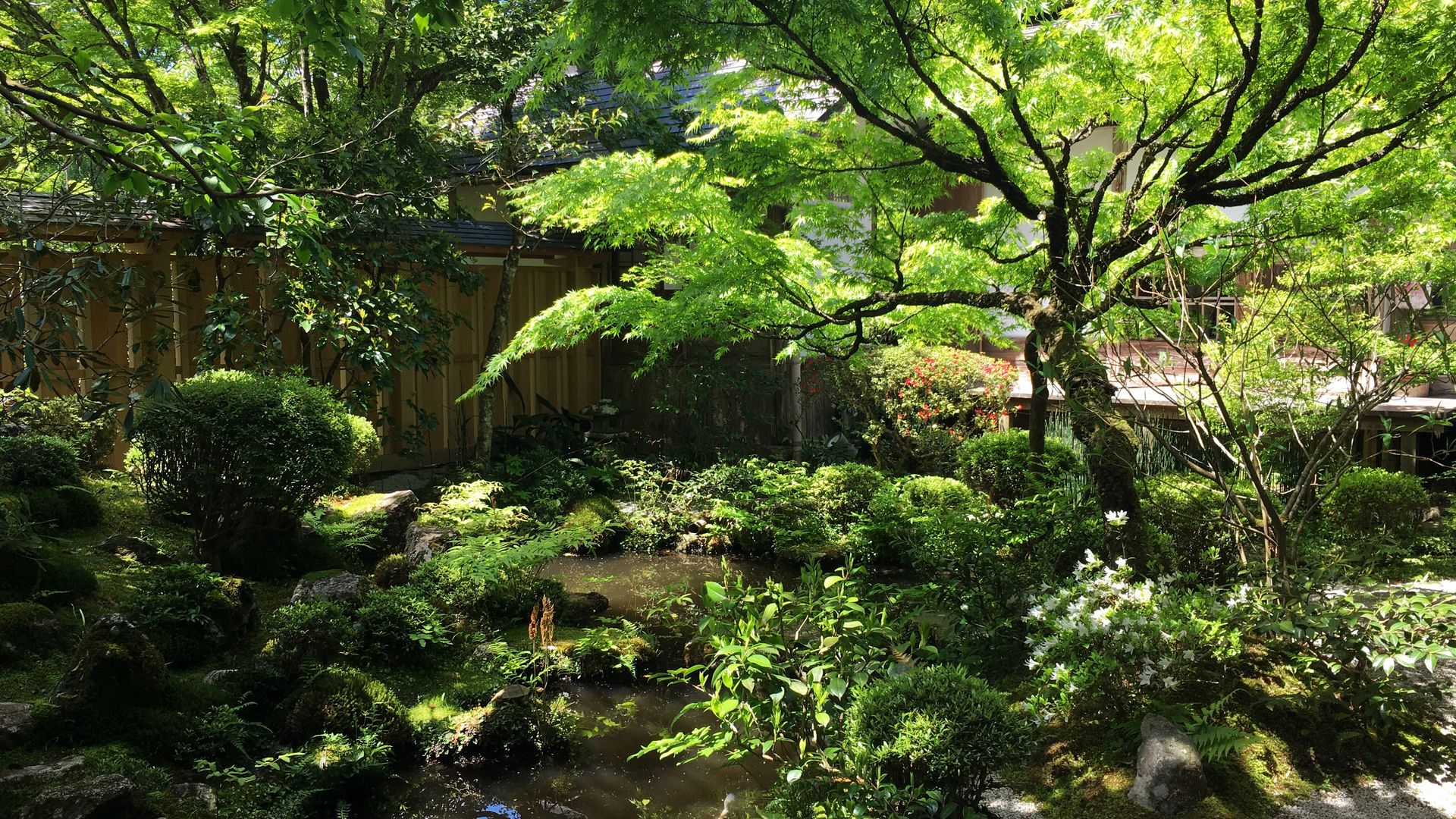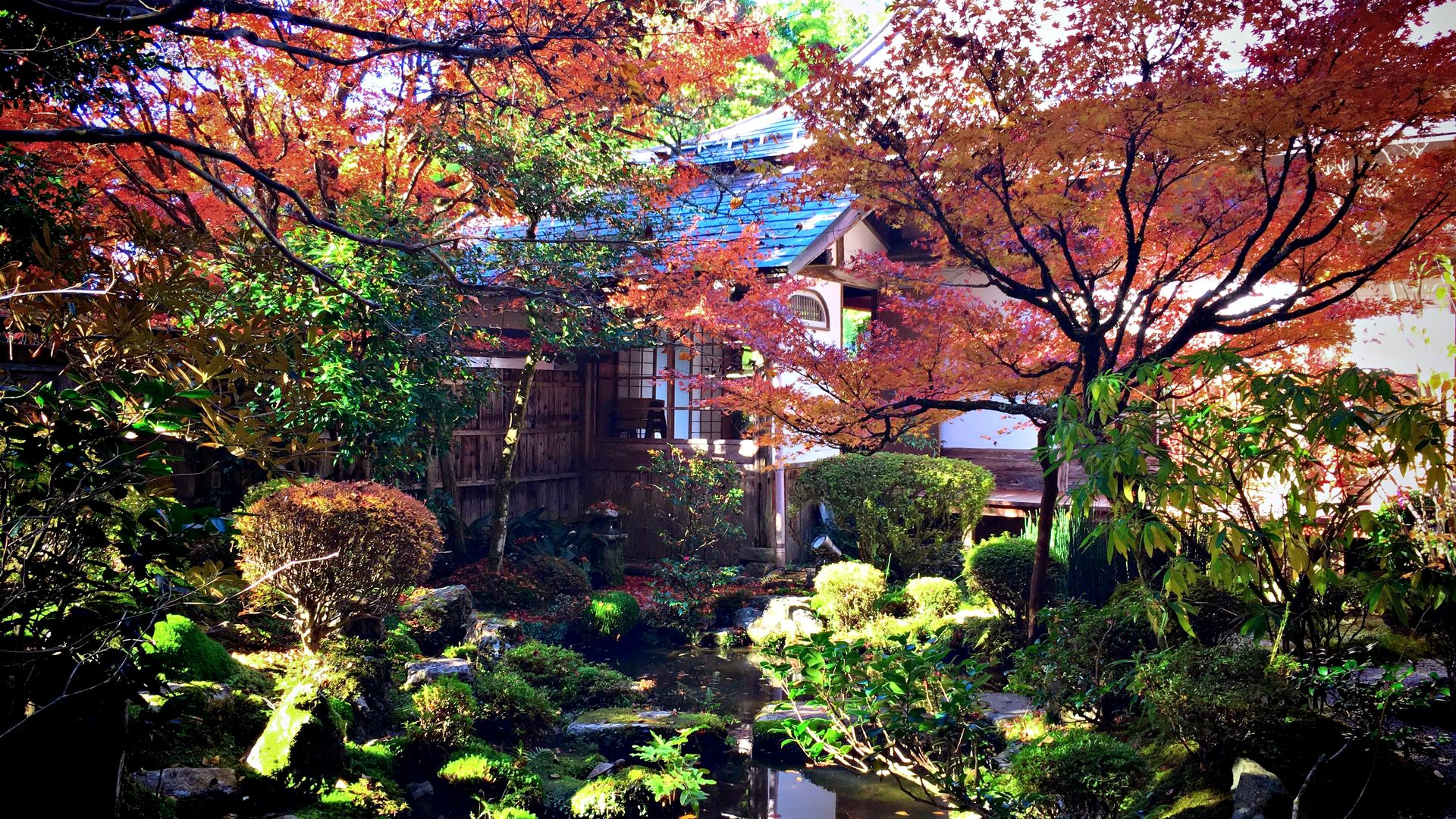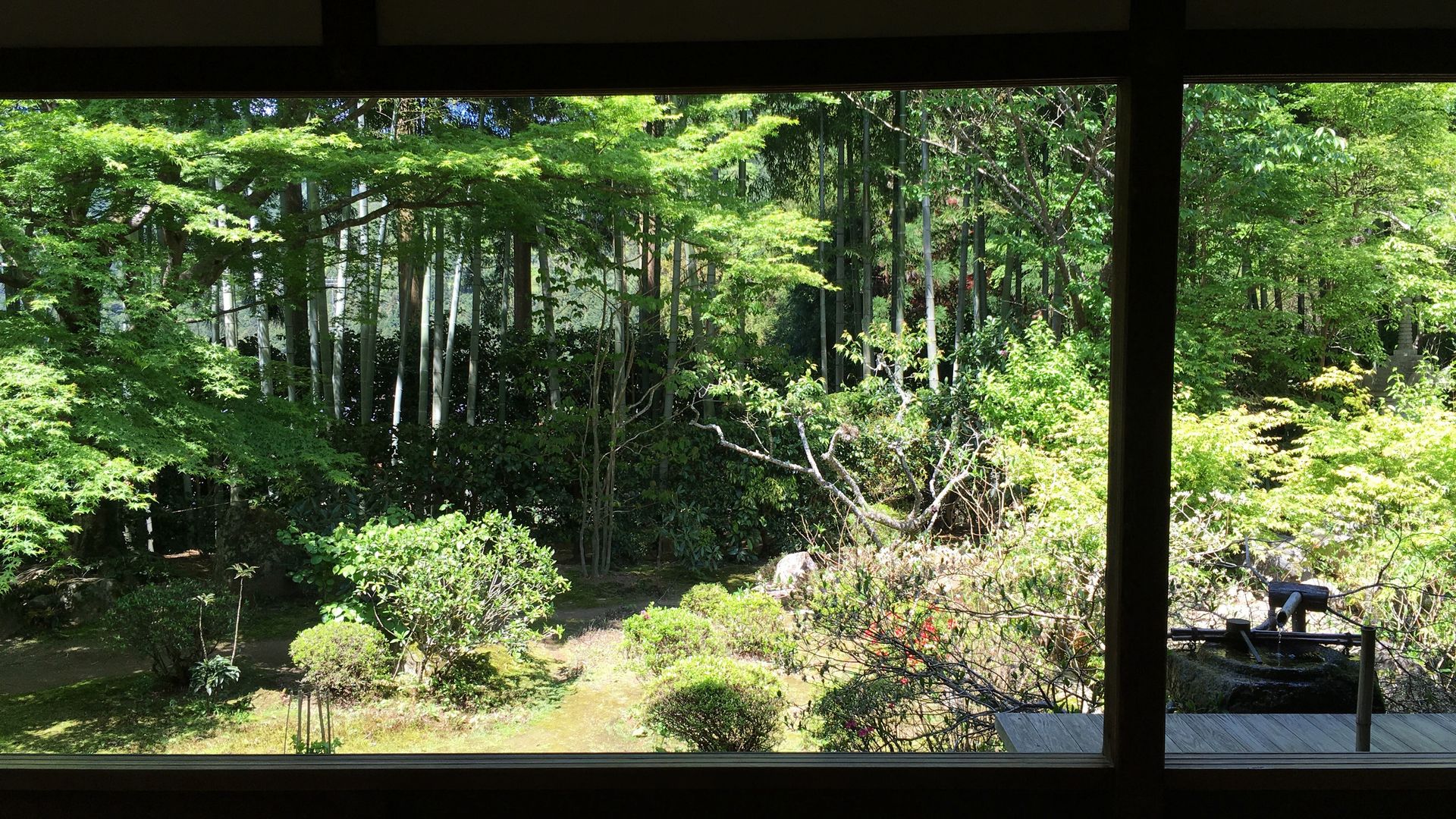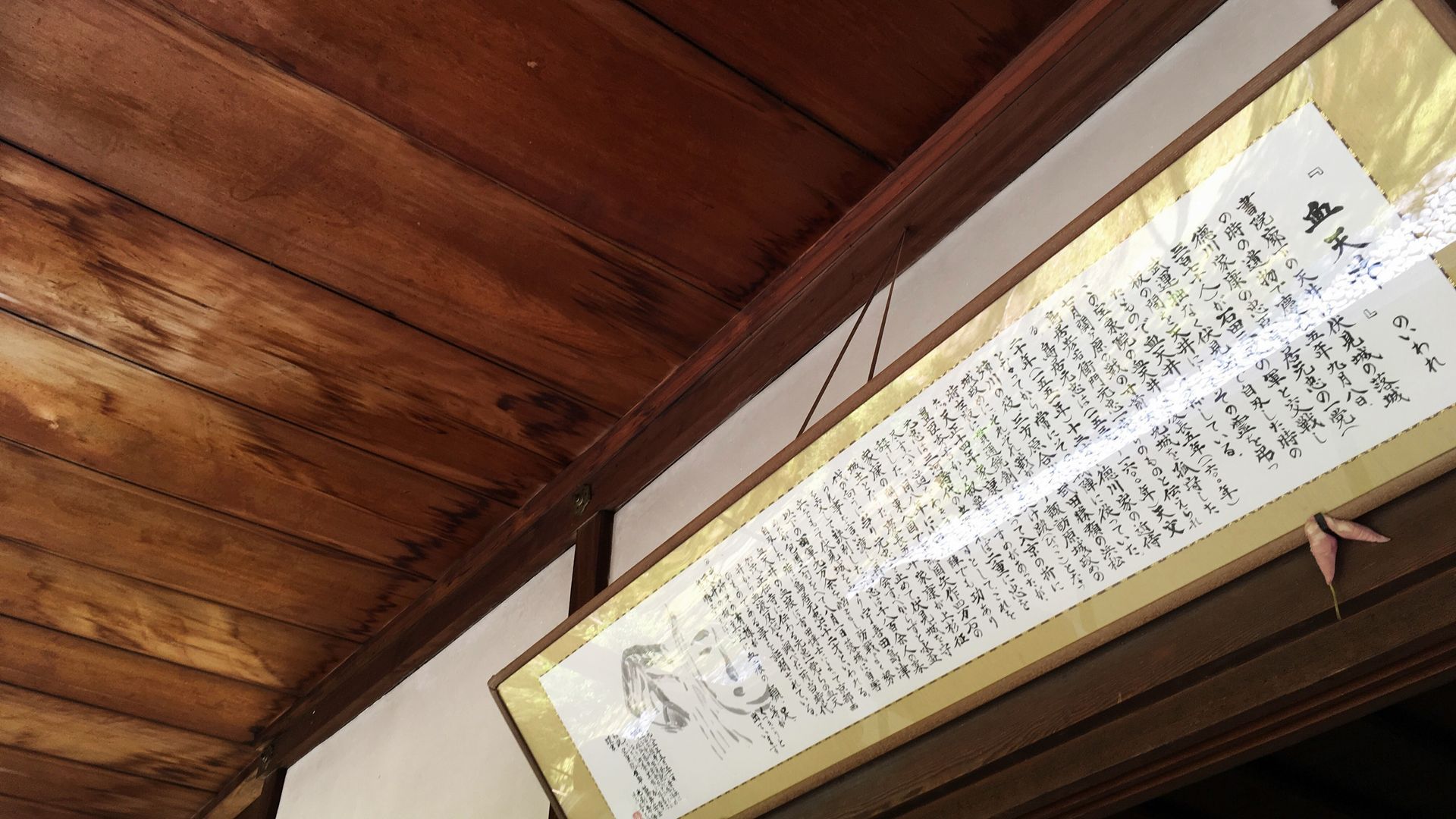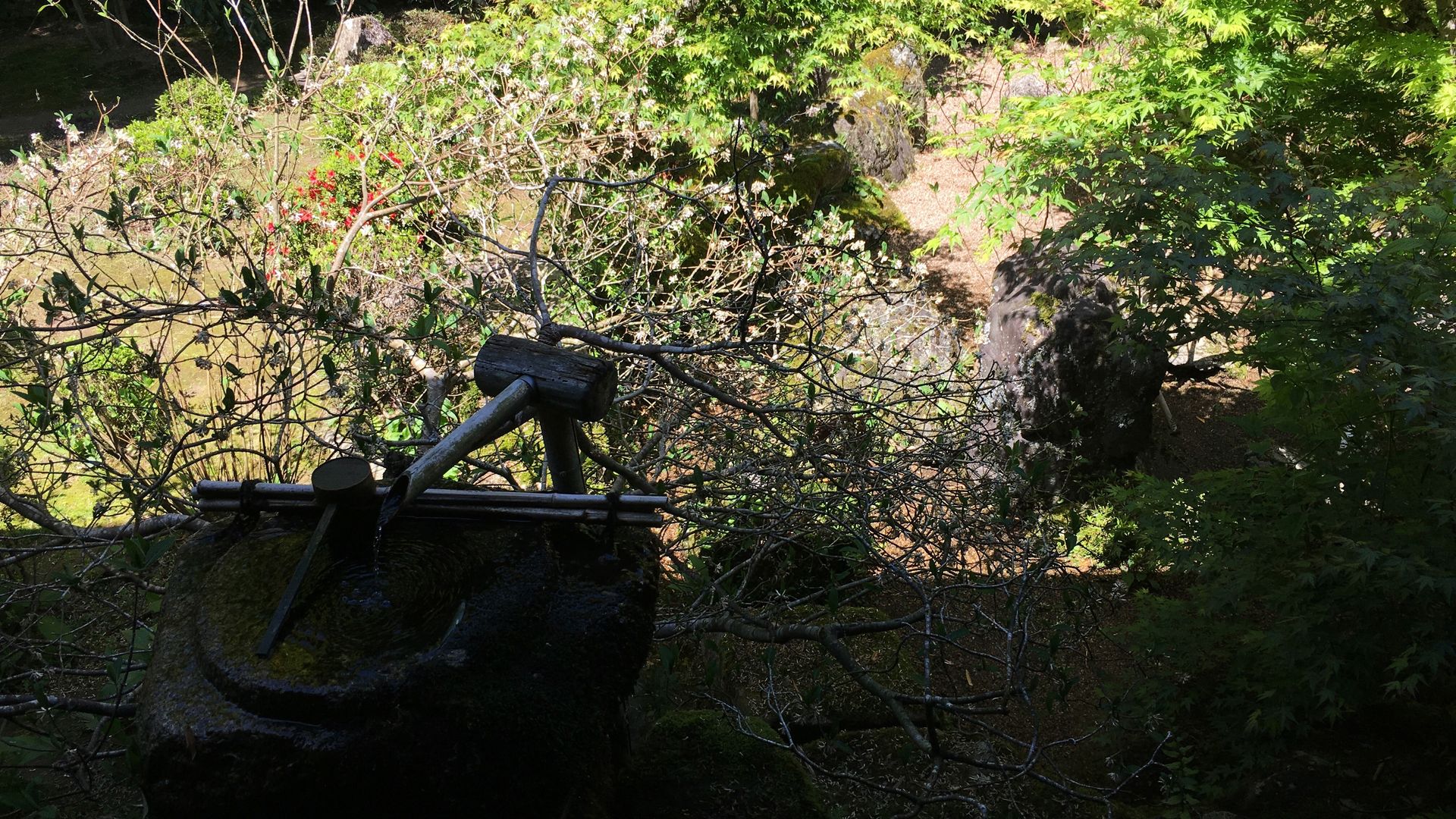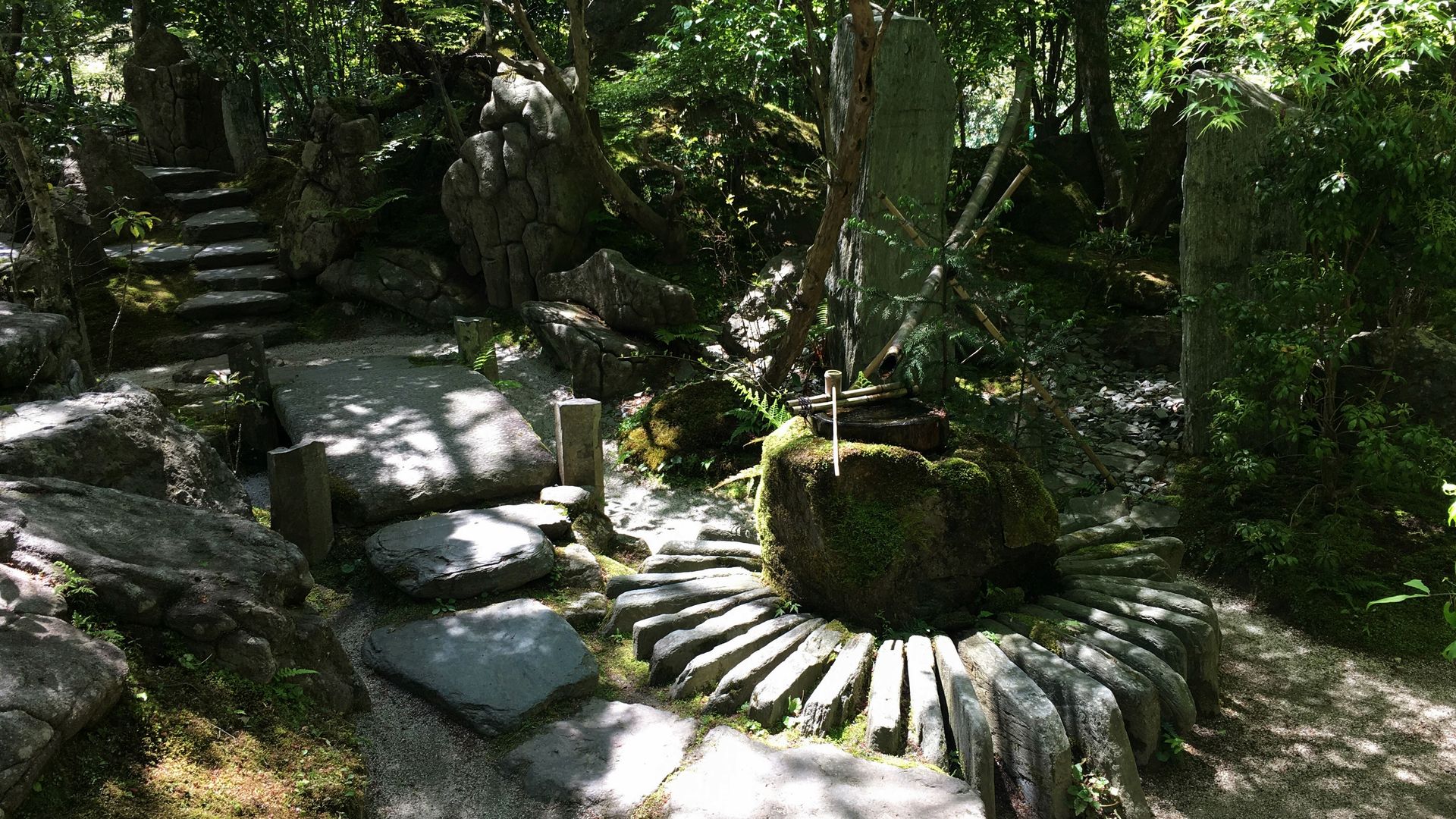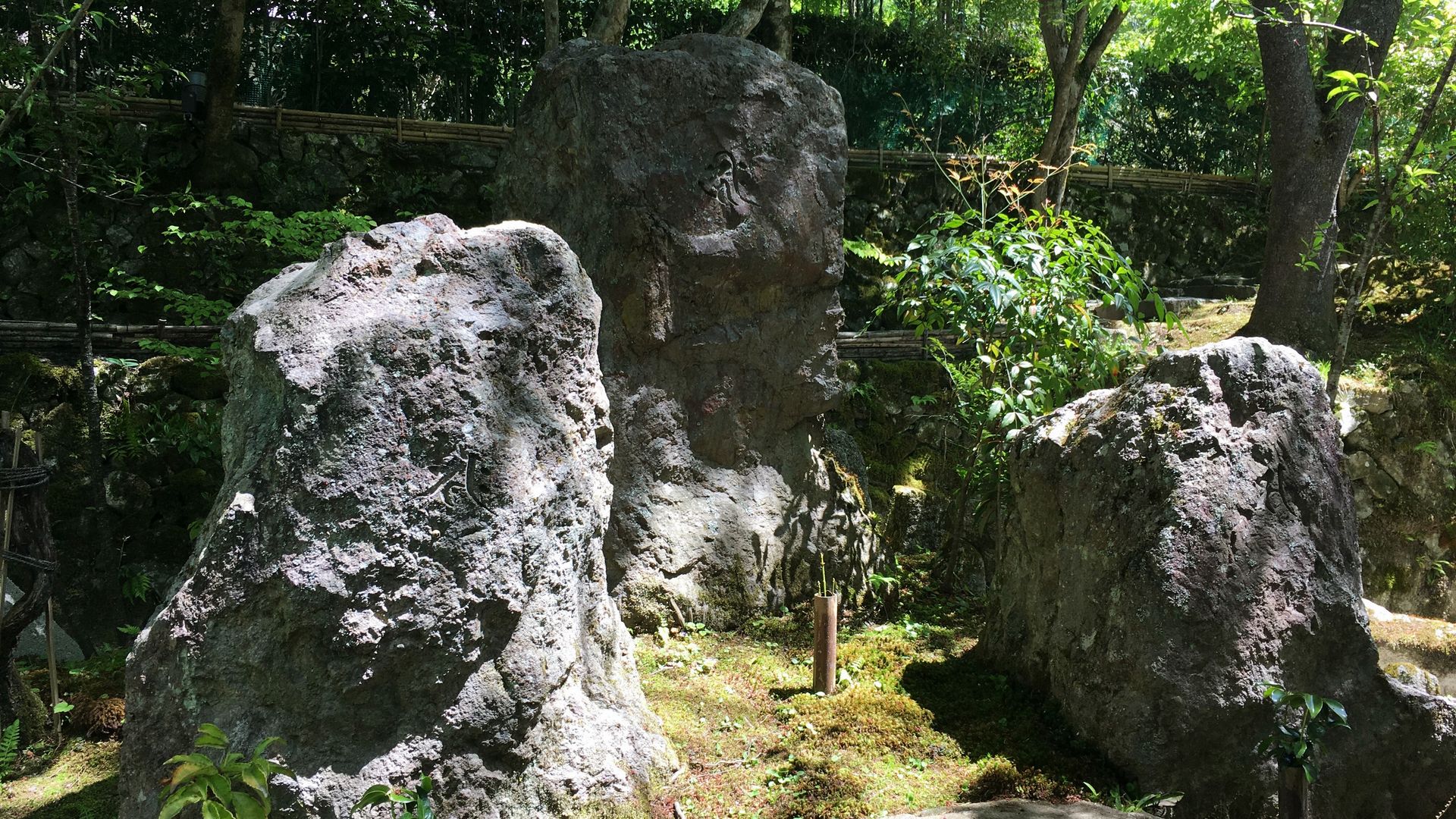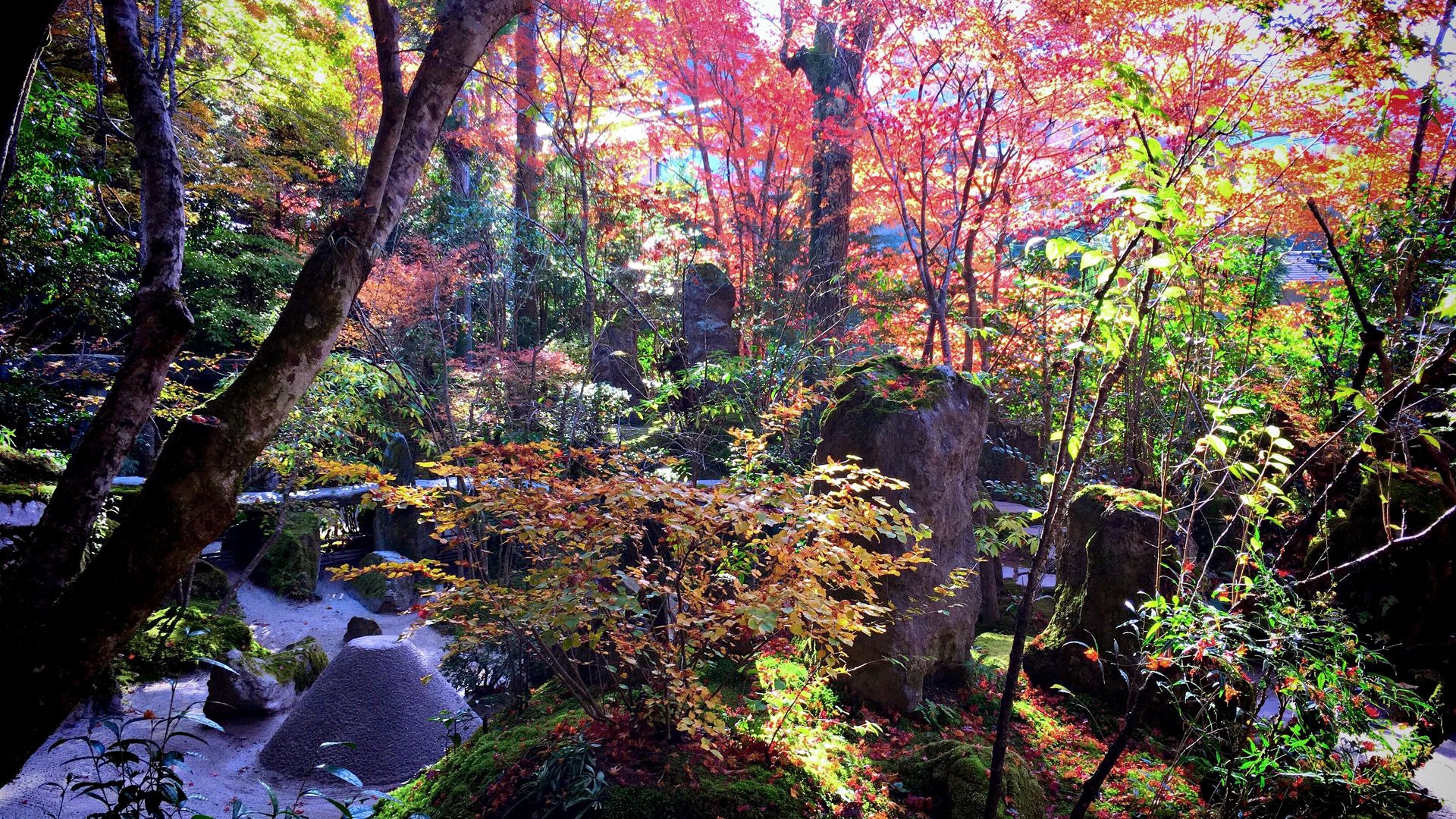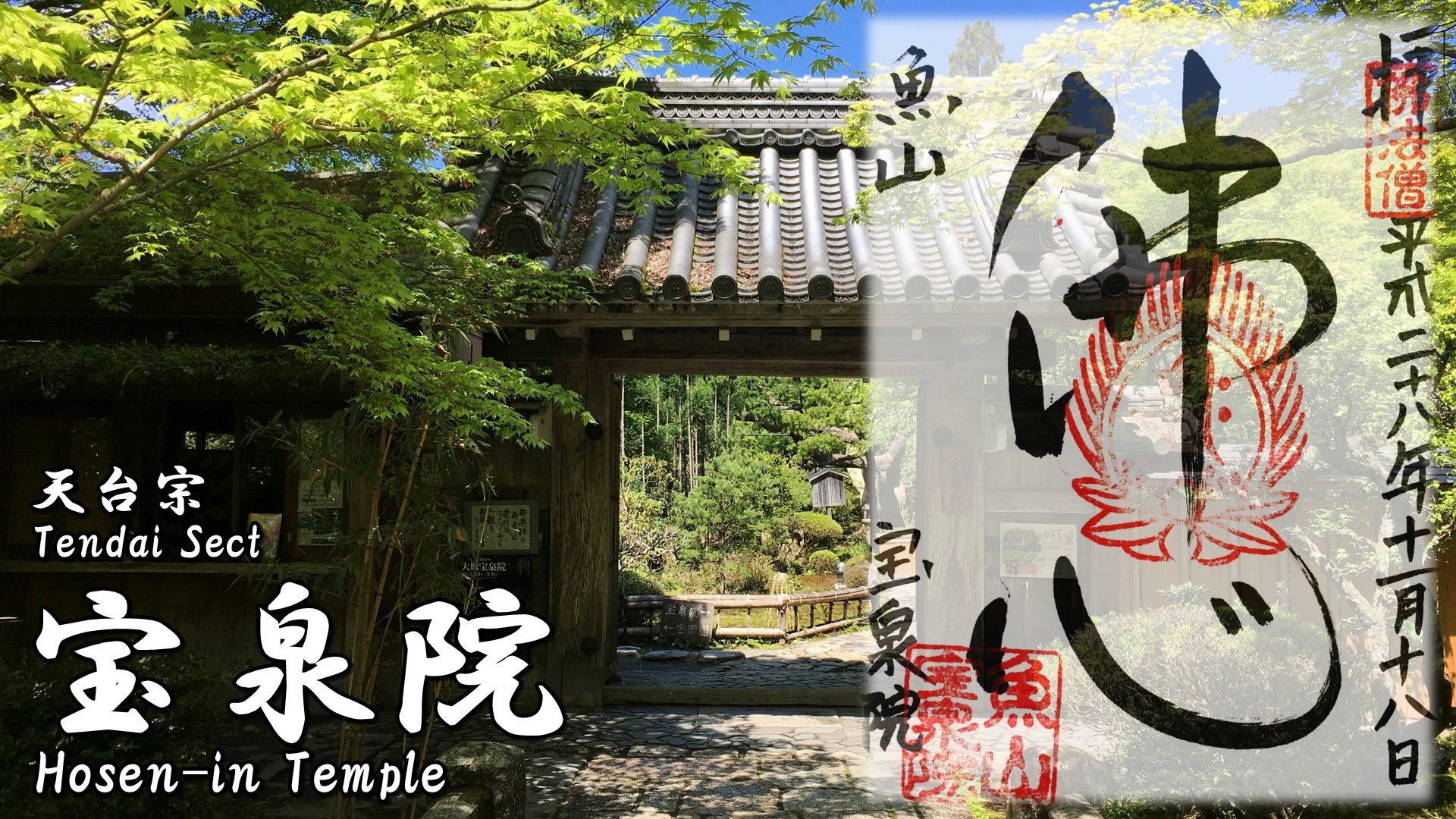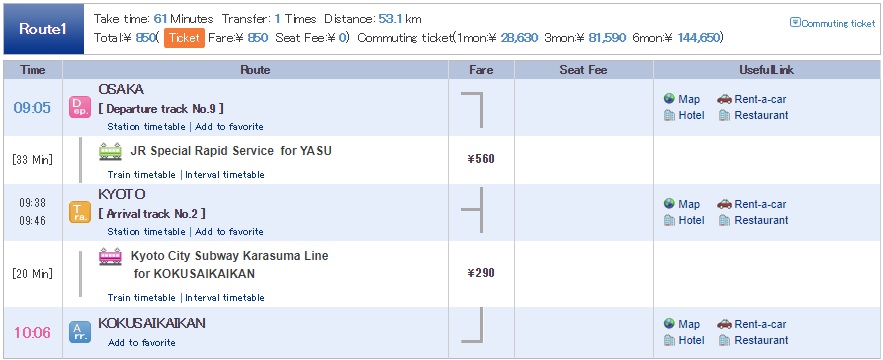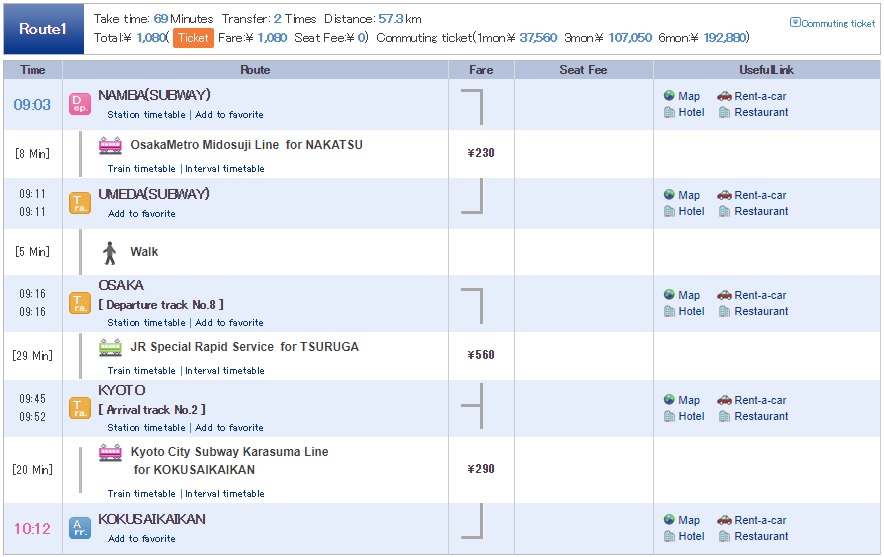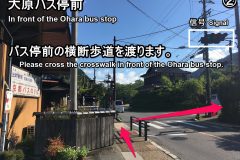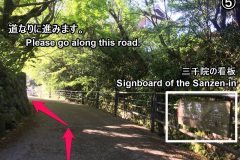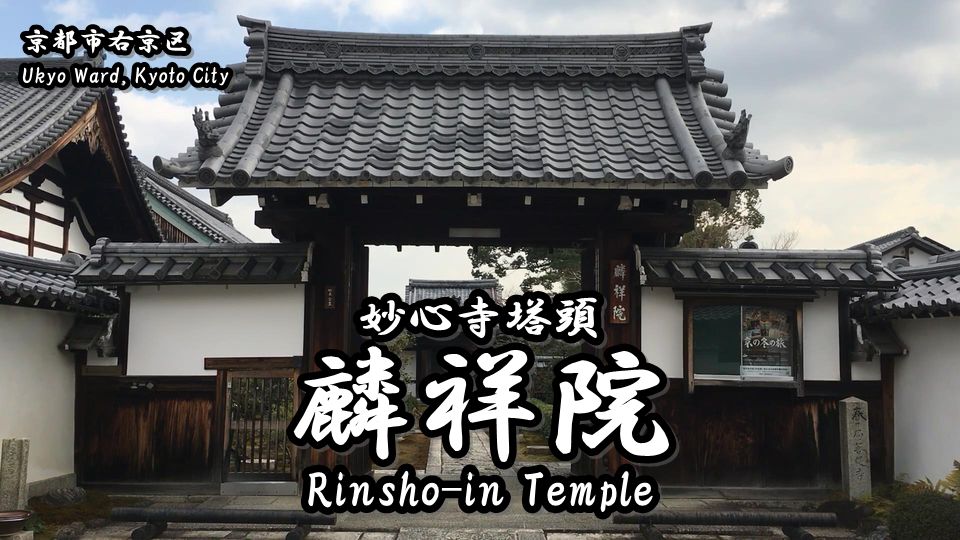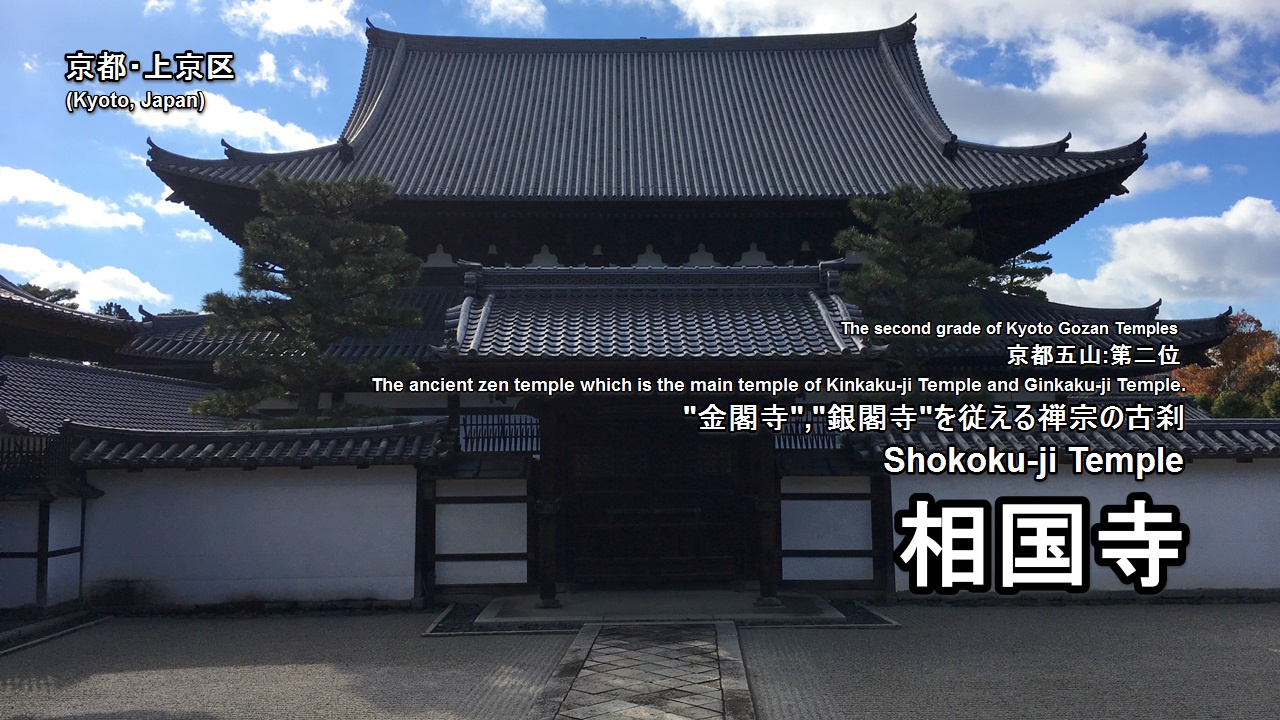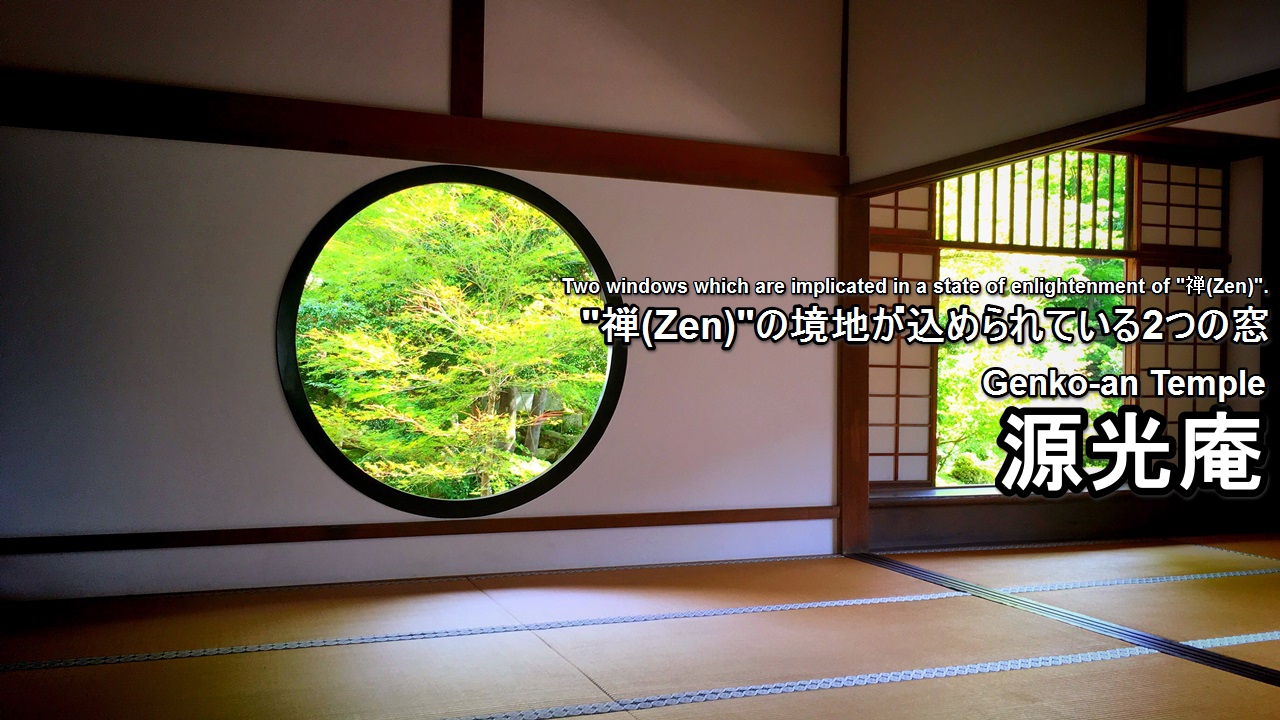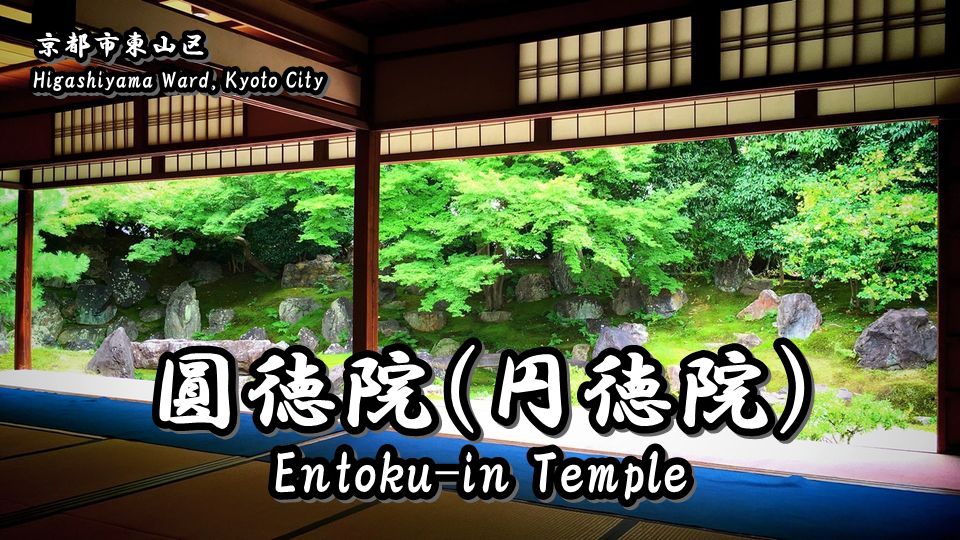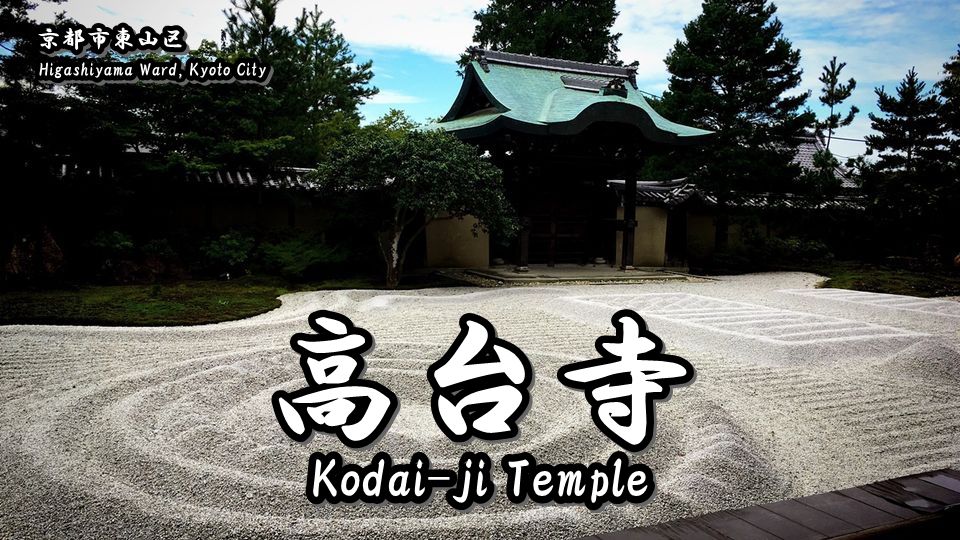Hosen-in Temple is one of the sub-temples of Shorin-in (Tendai Sect) located in Ohara, Sakyo Ward, Kyoto City.
The principal image (honzon) is Amida Nyorai.
There are different types of three Japanese gardens in the precincts.
History of Hosen-in
Let’s study the history of this temple with me.
I think that we can enjoy sightseeing of this temple more by learning the history of it. XD
It is said that Hosen-in was built in 1235 -1237 of the Katei era by Sokai who was a Buddhist priest of the Tendai sect.
At the time of the foundation of this temple, this temple was called ‘Ryosho-bo (了性房)’.
‘Bo (房)’ has the meaning of ‘priests living quarters”.
The Sho-in hall and gardens of the temple were built during the Edo period, and it came to be called ‘Hosen-in (宝泉院)’ in 1716 of the Edo period.
This temple was priests’ living quarters for the Buddhist priest who trained himself of ‘Shomyo (声明)’ from old days.
Shomyo (声明) is something like Christian hymn in Buddhism.
There are various types of Shomyo.
Shomyo which Saicho who was the sect founder of the Tendai Sect conveyed is called ‘Tendai Shomyo (天台声明)’, and it developed in the Ohara area.
In addition, it is said that Shomyo had a big influence on Joruri (dramatic narrative chanted to a samisen accompaniment) and Rokyoku (naniwa-bushi recitation) which are traditional arts of Japan.
Information for visitors
website
Information
Address:187, Ohara Shorinincho, Kyoto Shi Sakyo Ku, Kyoto Fu, 601-1241, Japan
Phone:+81-75-744-2409
Foundation:1235 – 1237
Founder:宗快法印
Sect:Tendai Sect (天台宗)
Principal image:Amida Nyorai (阿弥陀如来)
Open
9:00 – 17:00
Admission Fee
| Adults | Junior and senior high school students | Elementary school students |
| 800 yen | 700 yen | 600 yen |
(Include a green tea.)
Other Informations
Inside the building, there are places where photography is prohibited. (Please follow the official’s instructions.)
The worship method of a shinto shrine and a buddhist temple, please refer to the following article.
Next, let’s go to see the highlights of this temple with me!
Highlights of Hosen-in
- 山門:San-mon gate
- 法然上人衣掛けの石*:The stone seat of Honen*
- 書院*:Sho-in hall*
- 囲炉裏の間*:Irori fireplace room*
- 鶴亀庭園*:Tsurukame-Teien (Garden of Cranes and Turtles)*
- 盤桓園*:Bankan-en garden*
- 五葉の松*:Goyo-no-matsu (five-needle white pine)*
- 血天井*:Chitenjo (Bloody Ceiling)*
- 理智不二水琴窟*:Suikinkutsu (water harp cave)*
- 宝楽園*:Horaku-en garden*
This mark 「*」 is a pay area.
山門:San-mon gate
法然上人衣掛けの石*:The stone seat of Honen*
The old days, it is said that Honen sat down here.
書院*:Sho-in hall*
囲炉裏の間*:Irori fireplace room*
The Irori fireplace was developed as an essential part of everyday life in old Japan.
During meal, family members sit around here, and conversations are raised.
鶴亀庭園*:Tsurukame-Teien (Garden of Cranes and Turtles)*
This is the ‘Tsurukame Teien’ (Garden of Cranes and Turtles) which was created in the middle of Edo period.
There are a ‘kame-shima island’ (a tortoise island) and a ‘tsuru-pond’ (a crane pond).
In the autumn, we can see beautiful autumn leaves.
盤桓園*:Bankan-en garden*
This is the Bankan-en garden.
This garden is also called ‘Gakubuchi-no-niwa (picture frame garden)’.
五葉の松*:Goyo-no-matsu (five-needle white pine)*
A 700 year old ‘five-needle white pine’ is the highlight of this garden.
血天井*:Chitenjo (Bloody Ceiling)*
The ceiling board was reconstructed in the temple from Fushimi Momoyama-jo Castle, and there remains a trace of Mototada TORII (鳥居元忠), a vassal of the Tokugawa family who killed himself upon being defeated by Mitsunari ISHIDA (石田三成) in 1600, which resulted in a bloody ceiling.
理智不二水琴窟*:Suikinkutsu (water harp cave)*
Suikinkutsu is the water harp cave, a decoration device in a Japanese garden that generates a sound like the Japanese harp with drops of water.
宝楽園*:Horaku-en garden*
This is the Horaku-en garden, the dry landscape Japanese garden where a three stone Buddha statue located in the center.
In the autumn, we can see beautiful autumn leaves.
Autumn leaves
The precincts of this temple is also famous for its autumn leaves.
The best season of autumn leaves is late November to early December.
Video of Hosen-in
Photos of Hosen-in
Goshuin (Red ink stamps) of Hosen-in
Hosen-in’s red ink stamp (goshuin) , ‘Busshin (佛心)’.
How to get to Hosen-in
The nearest station is Kyoto Bus Ohara bus stop.
It is about 15 minutes on foot from Ohara bus stop.
We recommend that you go to Kokusaikaikan Station by a train, and get on a bus from Kokusaikaikan Station.
From Osaka Sta. to Kokusaikaikan Sta. (by train)
Timetable and Route Search (train)
1.Get on the JR Kyoto Line from Osaka Station to Kyoto Station.
2.Change to the Kyoto City Subway Karasuma Line at Kyoto Station.
3.Get on the Kyoto City Subway Karasuma Line from Kyoto Station to Kokusaikaikan Station.
From Namba Sta. to Kokusaikaikan Sta. (by train)
Timetable and Route Search (train)
1.Get on the Osaka Metro Midosuji Line from Namba Station to Umeda (Osaka) Station.
2.Get on the JR Kyoto Line from Osaka Station to Kyoto Station.
3.Change to the Kyoto City Subway Karasuma Line at Kyoto Station.
4.Get on the Kyoto City Subway Karasuma Line from Kyoto Station to Kokusaikaikan Station.
From Namba Sta. to Kokusaikaikan Sta. (by train)
Timetable and Route Search (train)
1.Get on the Kyoto City Subway Karasuma Line from Kyoto Station to Kokusaikaikan Station.
Get on a bus from Kokusaikaikan Station
Timetable and Route Search (bus)
Please get on a bus No.19 (bus stop 3).
[Timetable] Kyoto Bus No. 19
Bus company:Kyoto Bus
Routes/Destination:No.19 [Bound for Ohara・Kodeishi]
Boarding bus stop:Kokusaikaikan Sta. [3]
Alighting bus stop:Ohara
Bus fare:350 yen
Time required:About 22 min
Get on a bus from Keihan Demachiyanagi Station
Timetable and Route Search (bus)
Please get on a bus No.16 or No.17 (bus stop C).
[Timetable] Kyoto Bus No. 16 / 17
Bus company:Kyoto Bus
Routes/Destination:No.16 /17 [Bound for Ohara]
Boarding bus stop:Demachiyanagi Sta.[C]
Alighting bus stop:Ohara
Bus fare:430 yen
Time required:About 33 min
Get on a bus from Hankyu Kawaramachi Station
Timetable and Route Search (bus)
Please get on a bus No.17 (bus stop ‘To North’).
[Timetable] Kyoto Bus No. 17
Bus company:Kyoto Bus
Routes/Destination:No.17 [Bound for Ohara]
Boarding bus stop:Shijo Kawaramachi [To north]
Alighting bus stop:Ohara
Bus fare:520 yen
Time required:About 52 min
Get on a bus from JR/Subway Kyoto Station
Timetable and Route Search (bus)
Please get on a bus No.17 (bus stop C3).
[Timetable] Kyoto Bus No. 17
Bus company:Kyoto Bus
Routes/Destination:No.17 [Bound for Ohara]
Boarding bus stop:Kyoto Sta. [C3]
Alighting bus stop:Ohara
Bus fare:550 yen
Time required:About 68 min
From Ohara bus stop (on foot)
It is about 20 minutes (750 meters) on foot from Ohara bus stop.
Take a taxi
From Kyoto Station:about 6600 yen (40 minutes)
From Gion-Shijo Station:about 5900 yen (35 minutes)
From Kokusaikaikan Station:about 3500 yen (20 minutes)
・Let’s show a taxi driver the following phrase.
・If you want to call a taxi, let’s show the following phrase.
[Phone number of taxi dispatch : Around the Kyoto Station]*Japanese text only.
Hotel search & reservation
How did you like it?
Have a nice trip! XD

